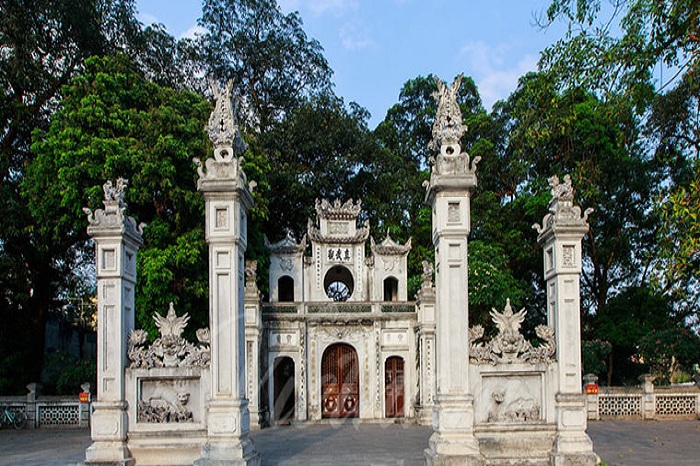
Quan Thanh Temple in Hanoi
- on Jul 1, 2020 By: Ngoc Nguyen
Hanoi is one of the most captivating capital cities in Southeast Asia thanks to its exceptional cultural, historical and spiritual heritage. Discover Quan Thanh Temple, an illustrious cultural vestige, one of the last Taoist temples in Vietnam and located in one of the most exciting districts of the Vietnamese capital.
History of Quan Thanh Temple
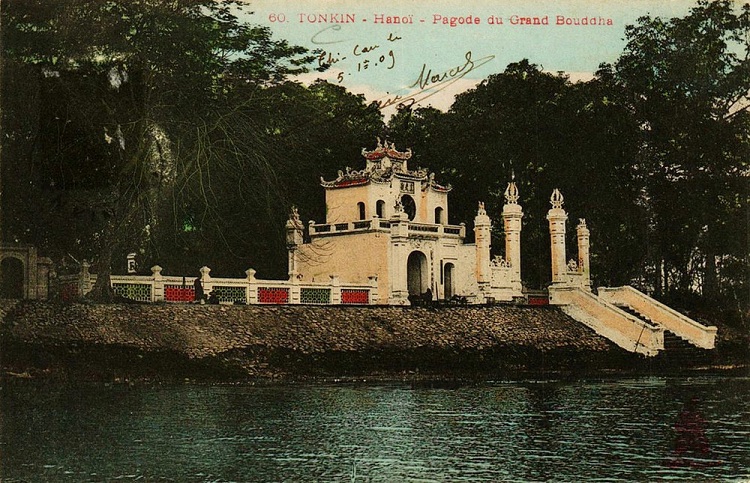
The Quan Thanh Temple, den Quan Thanh in Vietnamese meaning "shop of the gods", is an important cultural and historical vestige of the Vietnamese capital and is, therefore, a must-visit during your stay in Hanoi. According to legend, the Quan Thanh Temple was erected during the reign of Ly Thai To (1010-1028), the legendary founder of the great Vietnamese dynasty Ly, in honour of the Taoist god Tran Vu, ardent defender of northern Vietnam. The North-facing temple of Quan Thanh is one of four sacred temples built at each cardinal point to protect the capital from malicious spirits. Quan Thanh Temple has undergone several renovations over the centuries. King Le Hy Tong first ordered its restoration in 1677 and the statue of the god Tran Vu and the temple bell, both in black bronze, came to adorn the temple. The imposing bronze statue of Tran Vu measures almost 4 metres, weighs 4 tonnes and rests on a marble base. Being one of the largest statues in Vietnam and being recognised as a bronze foundry masterpiece from the early 17th century, the statue of Tran Vu has been declared a national treasure. The genius Tran Vu is reproduced seated in the costume of a Taoist priest, hair fluttering behind the neck, wearing the clothing of a warrior and a Taoist medium, with a square face. His feet are bare, his left hand is in the exorcism position, and his right hand is leaning on the handle of a sword around which a snake is wrapped while the tip rests on the shell of a turtle.
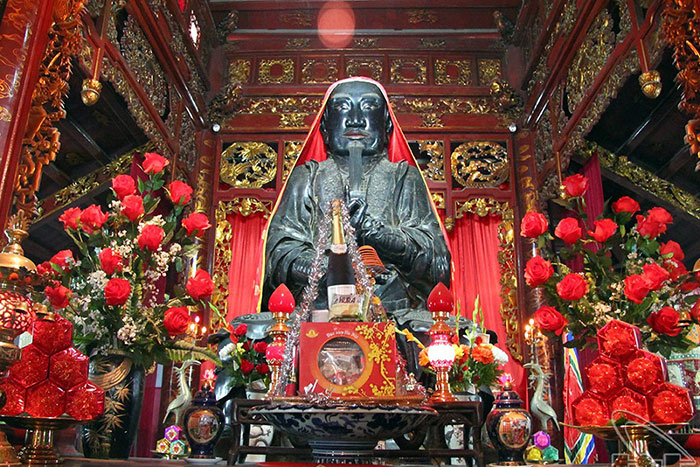
Visit the Quan Thanh Temple
Access to the Quan Thanh Temple is through a majestic stone portico with three entrances, surmounted by a monumental bell standing 1.6 metres high. You can observe several parallel sentences written on the portico. In front of the entrance, pay attention to the four large pillars decorated with reliefs representing the sacred animals ubiquitous in traditional Vietnamese cultures such as the tiger, the dragon, the unicorn or the phoenix. You then cross a courtyard planted with mango trees which, by its shade, brings a delicious freshness on hot summer days, to lead to the sanctuary which forms the back of the courtyard. Doors, frames, framework, red and gold lacquered altar... Everything has been meticulously worked and highlights the art of wood carving, a traditional Vietnamese craft very present in the Red River Delta for centuries. Of course in this courtyard, you can also admire the superb statue of the god Tran Vu covered with a shiny black patina. Besides these, you can contemplate the life-size statue of Ly Trong Trung, the founder of the colossal warrior statue of Tran Vu. The statue of Ly Trong Trung was executed by his own students who wanted to pay homage to their missing master.
Thang Long sacred quartet or current Hanoi with the Bach Ma, Kim Lien and Voi Phuc Temples, the Quan Thanh Temple remains one of the last Taoist temples in Vietnam and embodies multiple cultural values of Hanoi and the country. A spiritual place that invites you to let go, like a simple breath during your day of visiting the capital. The garden, a haven of tranquillity in the heart of the hectic capital of Vietnam, is also conducive to rest and meditation with its many essences of trees and flowers.
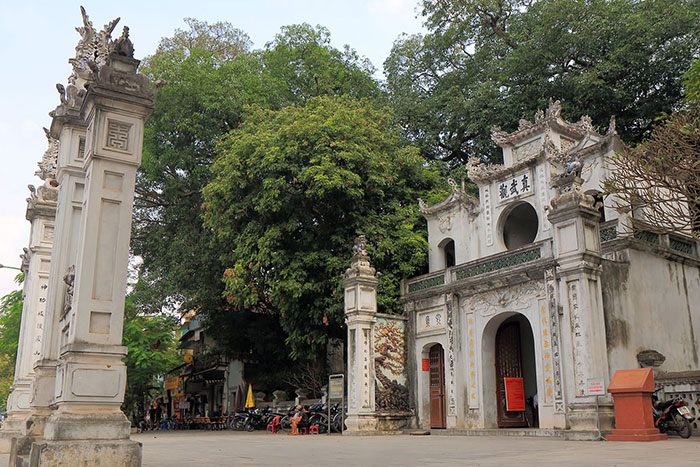
Quan Thanh Temple in the heart of an exciting district
Located in the heart of an exciting district, you have no excuse not to visit this cultural and historical curiosity of Hanoi. Quan Thanh Temple is indeed wedged between the West Lake and that of Truc Bach. The first, the largest in Hanoi, is home to another emblematic spiritual place of the capital: the Tran Quoc pagoda. The oldest pagoda in the Vietnamese capital, and recognizable from afar by its 15 metre high brick stupa, decorated with 66 statues of Amitābha Buddha. Truc Bach lake is a wonderful little lake full of charm where it is pleasant to walk there especially in May when the flamboyant shores of the lake are splashed with their bright red flowers. Around the lake, there are lots of little cafes where you can sit quietly for a Vietnamese coffee or tea. There are also some good neighbourhood restaurants where you can enjoy Vietnamese specialities. Not very far from the Quan Thanh temple, around 15 minutes on foot, you can discover some of the most prestigious historical monuments of Hanoi like the presidential palace, the famous Ba Dinh square, the house on stilts, the pagoda with the single pillar, the mausoleum and the Ho Chi Minh Museum.
Related articles:
>> Hanoi street food: a unique gourmet travel experience
>> Visit another Hanoi: early in the morning
>> Vietnamese Women’s Museum, an interesting touristy destination in Hanoi
 Español
Español Français
Français







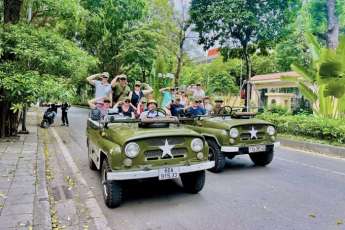
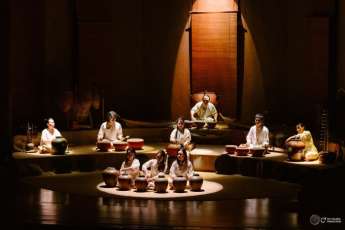

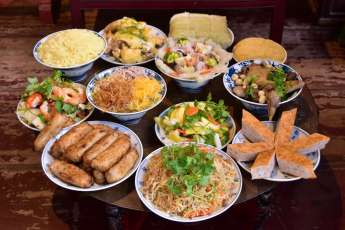

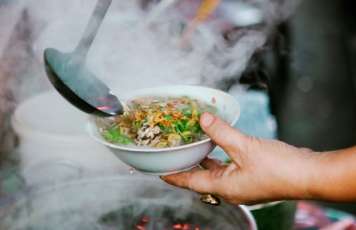







Morgane Ter Cock
on Dec 18, 2025HerbertPhomaMS
on Oct 19, 2025Lilyan Cuttler
on Oct 15, 2025Avenue17XC
on Sep 14, 2025Avenue18JL
on Jul 21, 2025